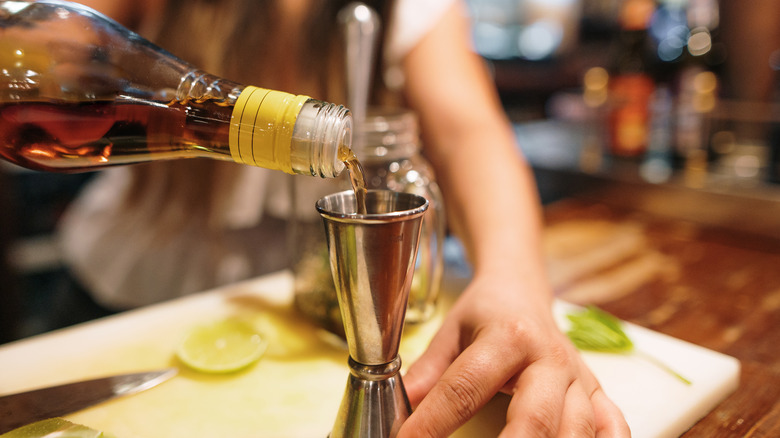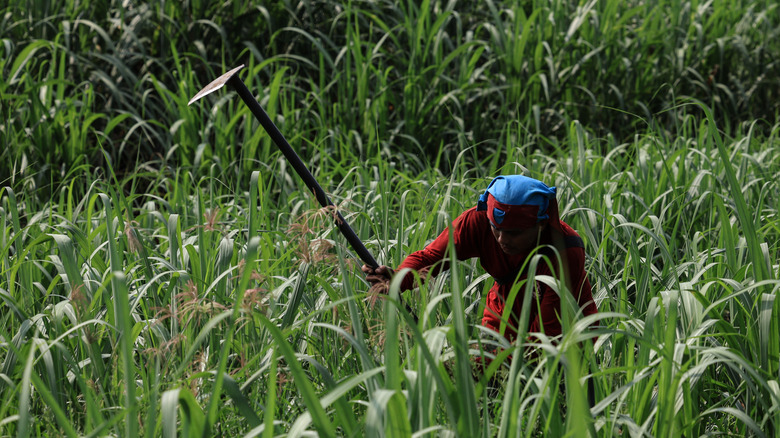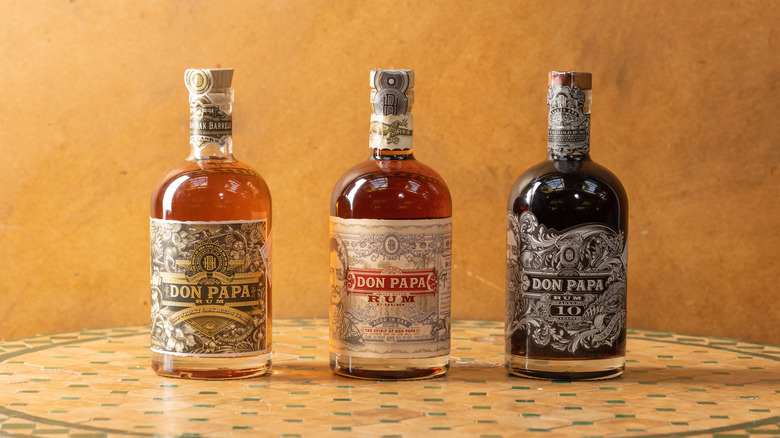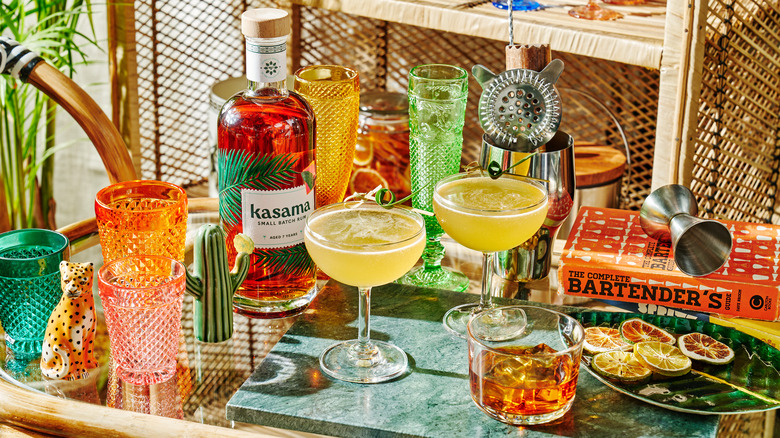Why Filipino Rum Deserves The Spotlight
Since most people generally associate rum with the Caribbean (places like Jamaica and Cuba), it might be surprising to learn that the world's top selling rum brand, Tanduay, is actually produced in Asia. That's right — the biggest rum sales happening today are coming out of the Philippines.
Premium rum has been pulling everyone's attention recently as a new generation of drinkers and collectors discover the spirit, so it makes sense that people are starting to pay attention to both the small batch and power player brands coming out of the Philippines.
Tanduay, which has been in operation for 169 years, has risen above even Bacardi in global sales. Don Papa, another rum brand once unheard of in the United States, was acquired earlier this year by the major multinational spirits group Diageo. And even the relative newcomer Kasama, a female-founded spirits brand from spirits industry legacy Alexandra Dorda, has developed a cult following as one of the most promising South Asian rum brands.
As Tomas Delos Reyes, a brand ambassador for Don Papa, told Food Republic, "People should be paying attention to Filipino Rum because one, we are a new voice in the category of rum. But also in this case... we've been doing rum for a long time, [for] generations. So it's cool because we're the discovery brand. We're discovery country. We're the discovery spirit."
Rum's past and its evolving future
Rum has a particularly gnarly history when it comes to colonization, with rum production in the Caribbean deeply tied to enslavement and exploitation of human labor and local resources. One of the legacies of this colonial relationship to rum is the way rum styles are often referred to. The three main styles of rum are still largely referred to as French-style rum (or Rhum agricole), English-style rum, and Spanish-style rum.
English-style rum is distilled from molasses using either pot-still or column-still distillation. Spanish-style rum also uses molasses but is largely column-stilled. And French-style rum is made from a cane juice base and uses column stills. But these categories have become less reliable over time as people experiment with the spirit, which may no longer neatly fall into these categories.
The Philippines, as a former Spanish colony, generally produces what could be referred to as Spanish-style rum. But innovative Filipino distillers are choosing to do things their own way, and abandoning these limiting qualifiers. "One way I'm seeing [the industry] evolve is by simply labeling the style of rum based on the base used, such as, this is a molasses-based rum, cane juice rum, or syrup, versus generalizing it based on the colonizing country," explains Don Papa's Tomas Delos Reyes.
Filipino rum vs. Caribbean rum
While Filipino rum and Caribbean rum share some basic production elements, they vary enormously when it comes to terroir. Sugarcane (particularly the much sought-after noble cane) is indigenous to the Philippines, and has been used to produce rum in the country since 1854. This native sugarcane is less fibrous than that found in the Caribbean, producing more juice, resulting in a richer, sweeter flavor. (In fact, the area of Negros Occidental where Don Papa is produced is called Sugarlandia by locals.)
Tomas Delos Reyes describes the main differences in tasting notes as "fruity, tropical, candied for Southeast Asia; and caramel, earthy, grassy, for Caribbean." In particular, many fans of Filipino rum are quick to point out the tropical fruits that show up on the palate, like banana, pineapple, and citrus, along with the quintessential rum notes of vanilla and wood.
Delos Reyes recommends the classic daiquiri as a great way to experience the difference between these styles, though Filipino rums like Don Papa are often sipped straight, or with simple accompaniments like tonic and lime or coconut water.
Filipino rum and cocktail culture
A lot of rum culture in the United States has been pigeonholed for generations within the category of tiki drinks, an American bar and cocktail genre inspired by largely secondhand and fabricated Polynesian aesthetics. But Tomas Delos Reyes cites the early aughts craft cocktail movement as a pivotal turning point for rum, harkening back to classic cocktails and an Old Havana vibe while still investing in the next era of the spirit. "How I've watched it change over the last few years has been purely off the desire for people to level up their drinking spirits experience ... So it's more expanding beyond this idea of tiki and an evolving style."
And this isn't just happening in the U.S. Though Don Papa is now in 32 countries, the brand has seen the biggest growth in Germany, Italy, and France, where a new wave of spirit lovers are falling for the tropical promise of the spirit. Rum as a category continues to offer the promise of faraway vistas, but this time, the people behind it are forging their own paths and putting their own cultures at the front of the picture. "We're seeing more diversity with the emergence of new brands," Delos Reyes assures. "There's definitely a lot brewing in the Philippines, and there's a lot more representation with spirits and rum from the Philippines."




